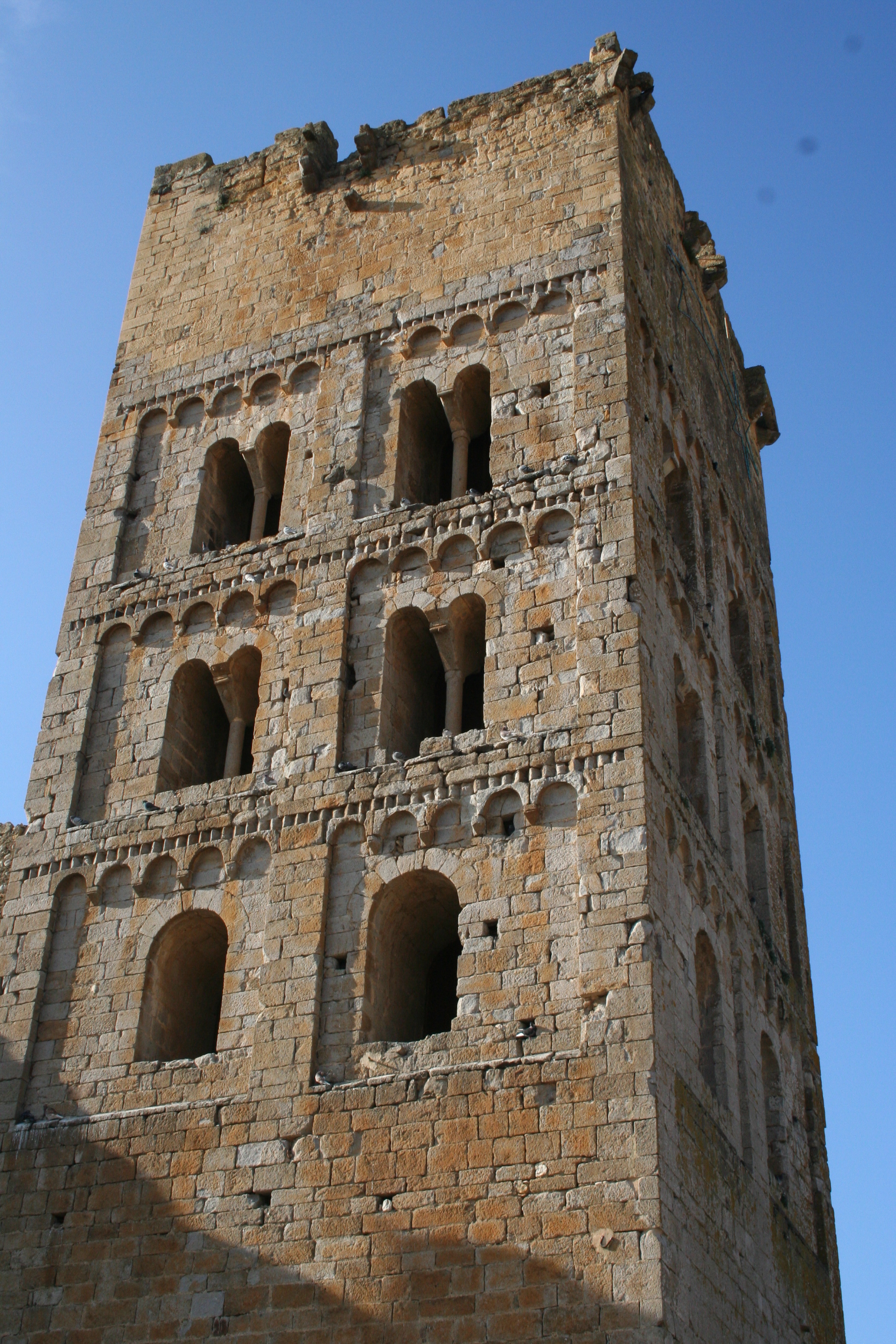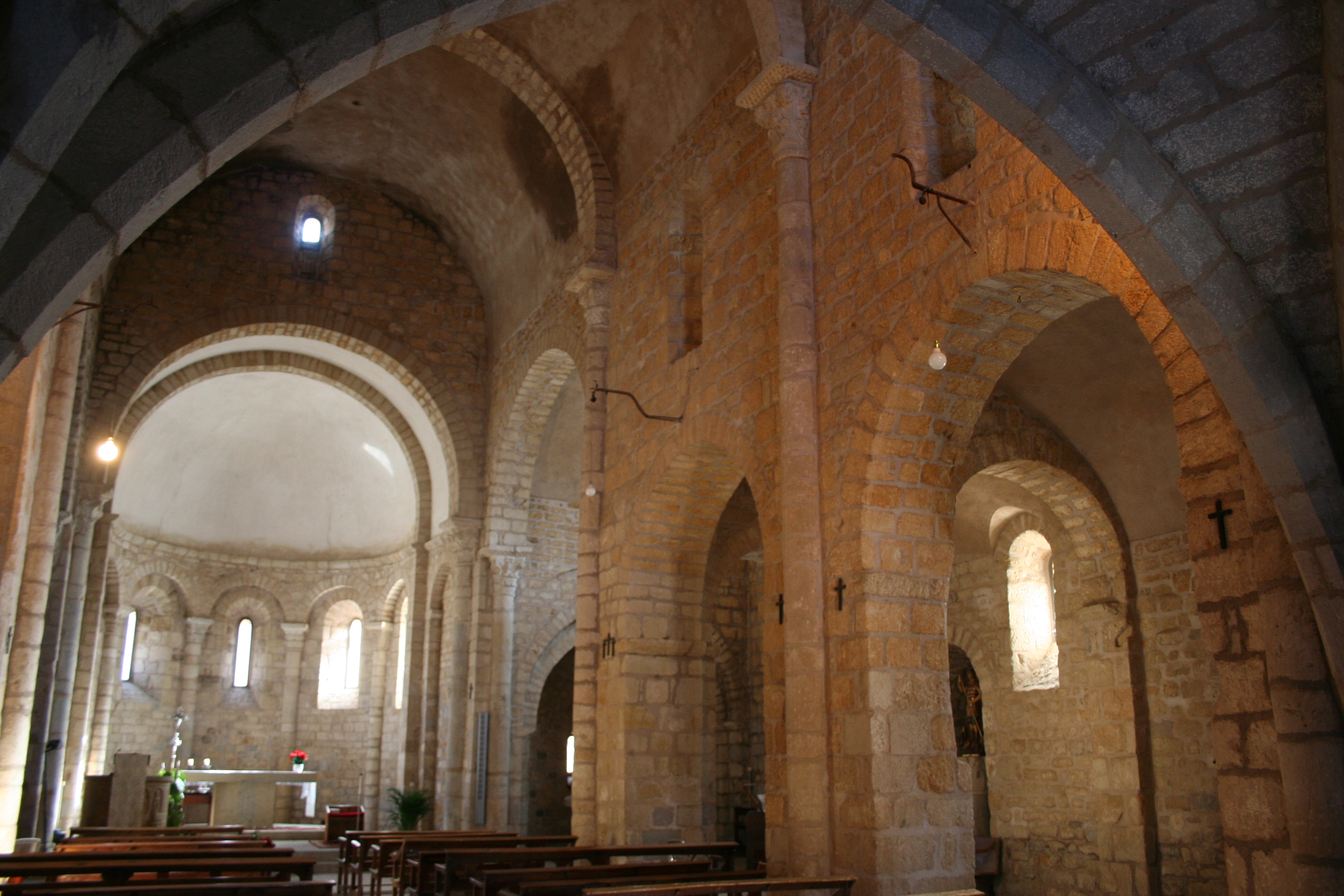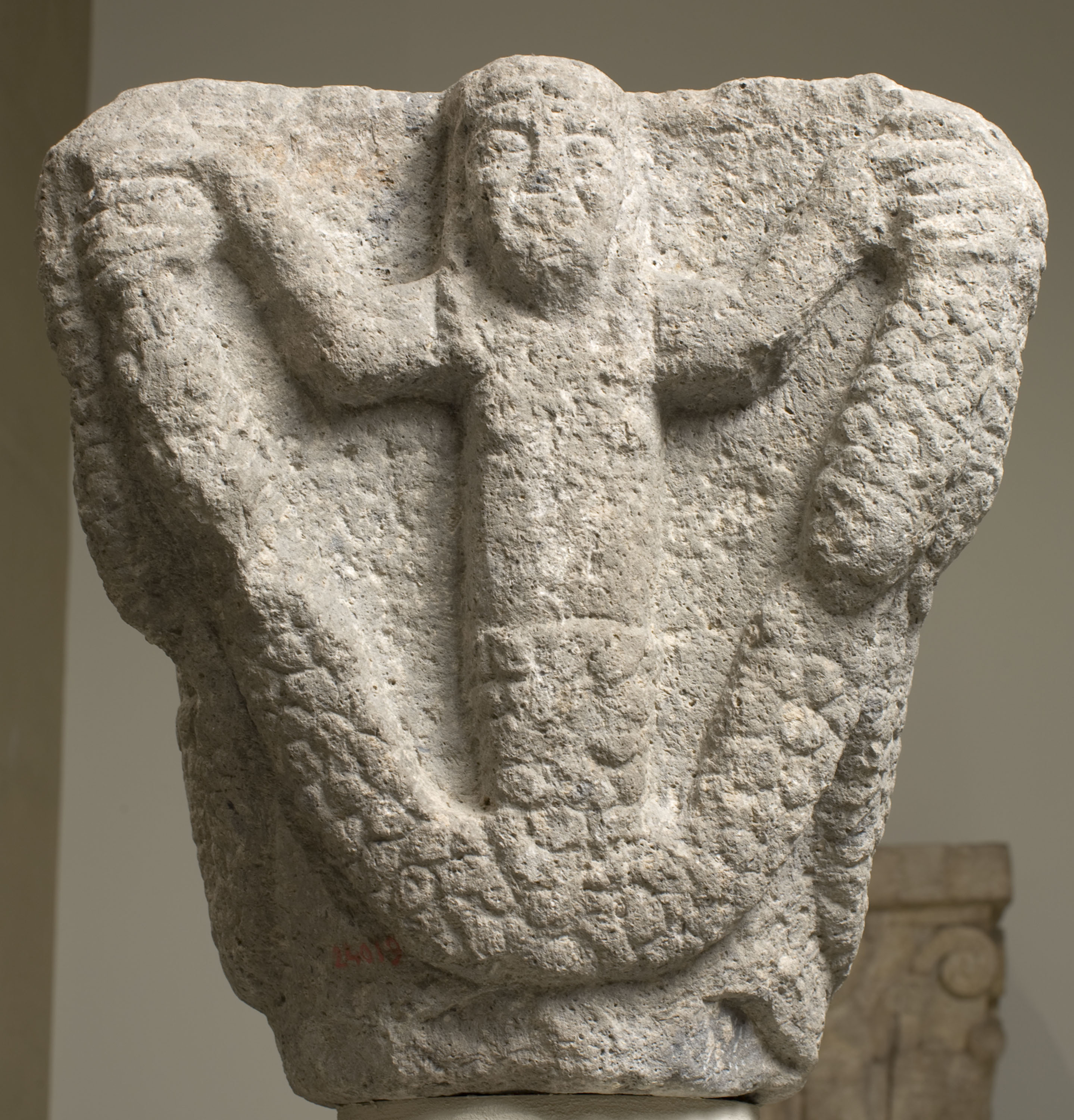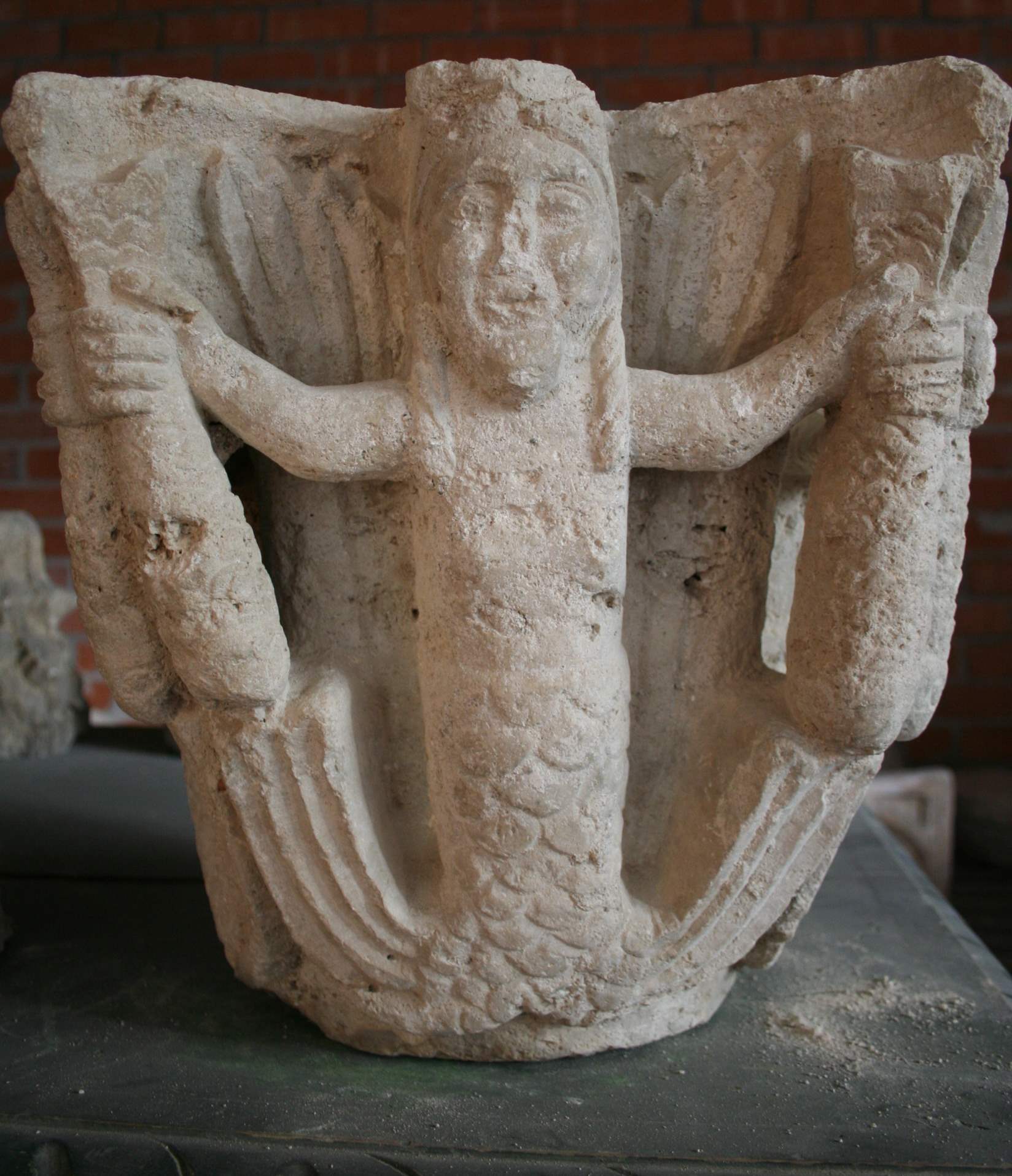Jordi Camps
The cloister is one of the basic and at the same time most visually attractive parts of monasteries and cathedrals. From the Romanesque period onwards it became a monumental, articulated area, endowed with an iconographic programme sculpted on the arcades of all four sides. Due to the gradual disappearance of some of the cloisters that once stood in Catalonia, the building and decorative materials were destroyed, reused or scattered. History has managed to bring some of them back to life thanks to the recovery of fragments, restoration work and archaeological digs. Some of these sites are of key importance, for instance Sant Miquel de Cuixà, Sant Pere de Rodes and Santa Maria de Solsona.
Fragments of an unknown cloister in the museum
For over 100 years the museum has conserved three Romanesque capitals, carved on all four sides. Until very recently it was not known that they come from the cloister of the monastery of Sant Miquel de Fluvià in L’Empordà. They had in the past been ascribed to the cloister of Sant Serni de Tavèrnoles or considered to be of unknown provenance. But neither in their style, repertoire, size or material do they match the pieces from that site, of which the museum also possesses examples. Their peculiarities forced us to rule out other scattered, well-known sites. Now, after several studies and investigations made in recent years, we are able to demonstrate where they come from.
One of the duties of the museum conservator, cataloguing the works of art, consists of attempting to refine the classification of works of uncertain or doubtful provenance. This may occasionally lead to revealing surprises. Beginning with the researcher’s curiosity and the challenge implied in an enigmatic work, the comparative analysis that is one of the resources of the art historian, in combination with the contributions of history and archaeology, has made it possible to determine the origin of the three capitals. Below I shall tell you how this came about.
A singular monument in the Empordanese Romanesque style
The observation of three decontextualized and reused capitals during a visit to the church of Sant Miquel de Fluvià revealed close similarities with the ones in the museum. Similarities that were confirmed with a subsequent detailed examination to check measurements and proportions, which also matched. Some specialists had admittedly already ascribed these pieces to the monastery cloister.
Sant Miquel de Fluvià was a Benedictine monastery first mentioned in the eleventh century, dependent on the great abbey of Sant Miquel de Cuixà, on the north side of Canigó. An indication of its importance is the presence of a figure such as Oliba – abbot of Cuixà and bishop of Vic – in 1045 at the consecration of the land that had been set aside for it. What remains standing today is a three-nave church, consecrated in 1066, whose interior is magnificent due to its monumental nature and the sculptural decoration that is thought to be eleventh century. A large bell tower added to the north side of the transept dominates the volumes of the buildings.
The cloister was built on the south side of the church, almost certainly shortly after it was completed. In the nineteenth-century a scholar mentioned it and even observed the odd capital scattered about. But there is a determining factor that has helped us to learn more about the lost cloister of Sant Miquel de Fluvià. Several archaeological digs have been carried out since the beginning of this century that have enabled us to recover its floor plan and explain its structure; at the same time, some fragments of sculpture have been discovered, including capitals that can be added to the list of those already known. Its history, however, is turbulent. At least part of it had already been destroyed by the later Middle Ages. This was due to the digging of a moat during one of the wars, civil and foreign, that affected the territories of L’Empordà. In fact the church looks like a fortress because of the battlements running round much of its perimeter and the bell tower.
Classifying the capitals: the relationship with the cloister of Banyoles and other peculiarities
Of the capitals in the museum, the most significant one is decorated with the figure of a mermaid-fish on all sides. The figure appears in strict symmetry with a forked tail that rises towards the corners and is held by the hands, which also hold a fish as a marine attribute. Although the depiction of the mermaid-fish is habitual in Romanesque art, as can be seen in cloisters as important as Ripoll and Sant Pere de Galligants (Girona), the solution of our capital, with the fishes, is found again on a capital from another destroyed cloister, that of the monastery of Sant Esteve de Banyoles.
This series was replaced by the present one in the eighteenth century, although some decorative elements have been recovered and are now conserved in the Archaeological Museum of Banyoles and in the monastery. The afore-mentioned capital was discovered during restoration work carried out on the monument in 1999. The mention of the sculpture in this monastery is highly significant, as there are other works from Sant Miquel de Fluvià that are similar to those in the cloister of Banyoles.

Anonymous. Capital from Sant Miquel de Fluvià, First third of the 12th century
If we return to the museum, the two remaining capitals show compositional patterns derived from the ancient Corinthian capital, something that was very common in medieval sculpture. One of them has the front part of the body of a ram looking towards the corners, on a bed of plain acanthus leaves.The other one has two levels of leaves, with the volutes at the top.
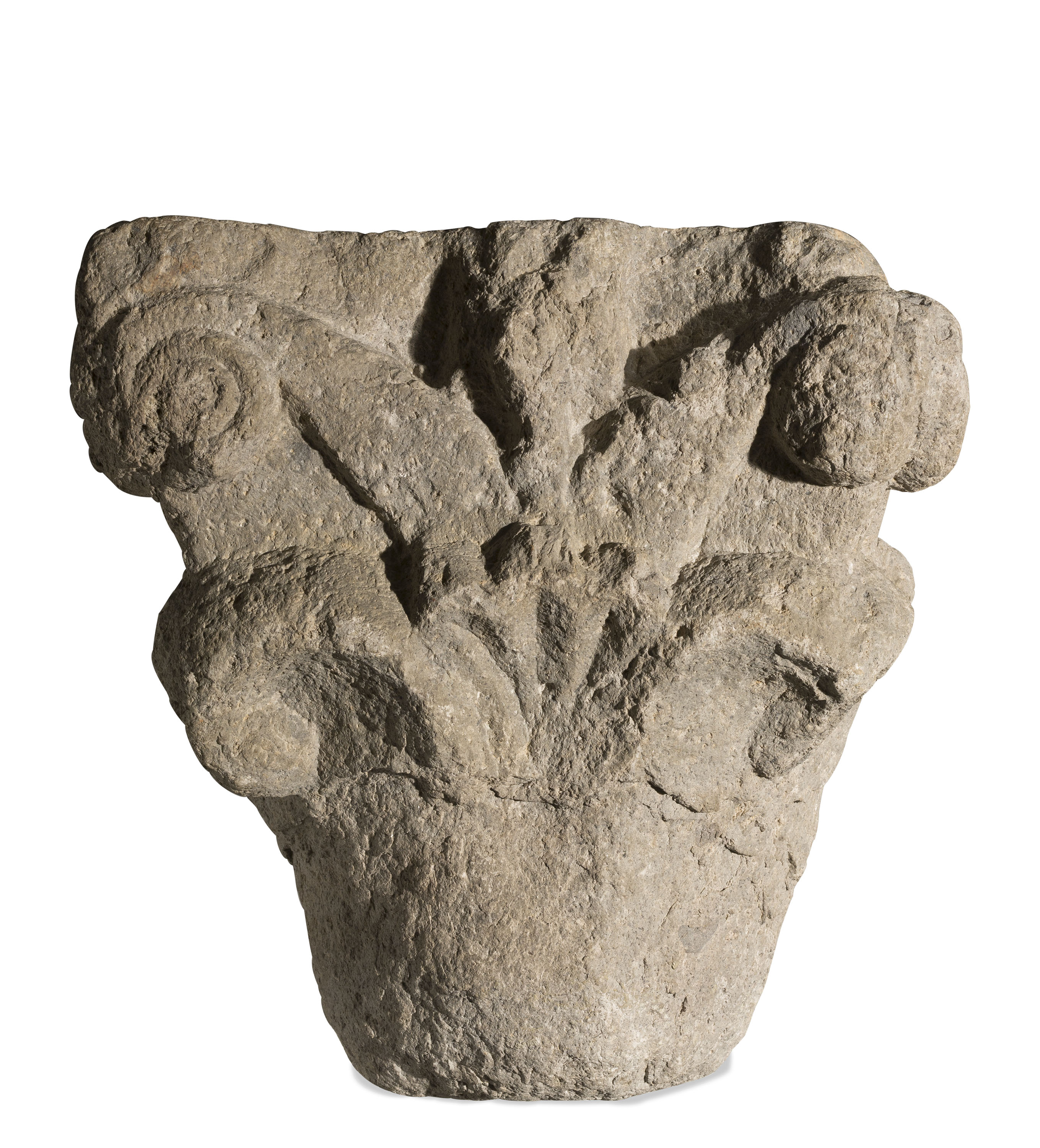
Anonymous. Capital from Sant Miquel de Fluvià, First third of the 12th century
All three capitals are the same size and have the same distinguishing feature, the absence of the moulding that joins them to the shaft of the column, called the astragal. These characteristics are observed in the capitals conserved in Sant Miquel de Fluvià and the cloister of Banyoles. Moreover, these capitals are made of the same material as those in the museum, a greyish volcanic stone obtained from a quarry in the village of Vilacolum (municipality of Sant Tomàs de Fluvià), not far from the monastery. On the other hand, the Banyoles capitals are in another material, travertine.
In what year was our site built?
For the time being we have to rely on indirect data, which only give us a vague indication. They are the consecrations of both churches, in 1066 for Sant Miquel and 1086 for Sant Esteve. Their respective cloisters must have been built later. Formally, with the compartmented compositions the two sites seem to be based on the sculpture produced in the twelfth century.
The choice of animals and plants as subjects generally tallies with Catalan sites prior to 1150. Indeed, the choice of subjects, as far as we know, is similar to that of Cuixà, with drawings of animals, human figures and floral and geometric motifs. There are also points in common with other churches in the old county of Besalú consecrated not long after 1100. We do not know the exact date, but it is feasible to think that it is not too far away from that of Cuixà, dated between 1120 and 1140. From this perspective, we can propose that the cloister of Sant Miquel de Fluvià is, together with that of Banyoles, one of the first to have featured sculpted decoration in Catalonia.
Archaeology and art history at the service of the patrimony
Once again, the tools of archaeology and art history as scientific disciplines converge and make it possible to recover a site that remained hidden for so many years. The part played by the institutions, in their support for the excavations, has also been crucial, particularly the local council of Sant Miquel de Fluvià and the provincial government (Diputació) of Girona.
Today we can partly revive the atmosphere in the cloister of Sant Miquel de Fluvià through the restoration of the ancient site and its sculpted testimonies. The memory of it is gradually being brought back and we can take a stroll though the monastery’s years of splendour. At the same time, our knowledge of the works conserved in the museum is enriched. The search, however, continues.
Art Medieval

